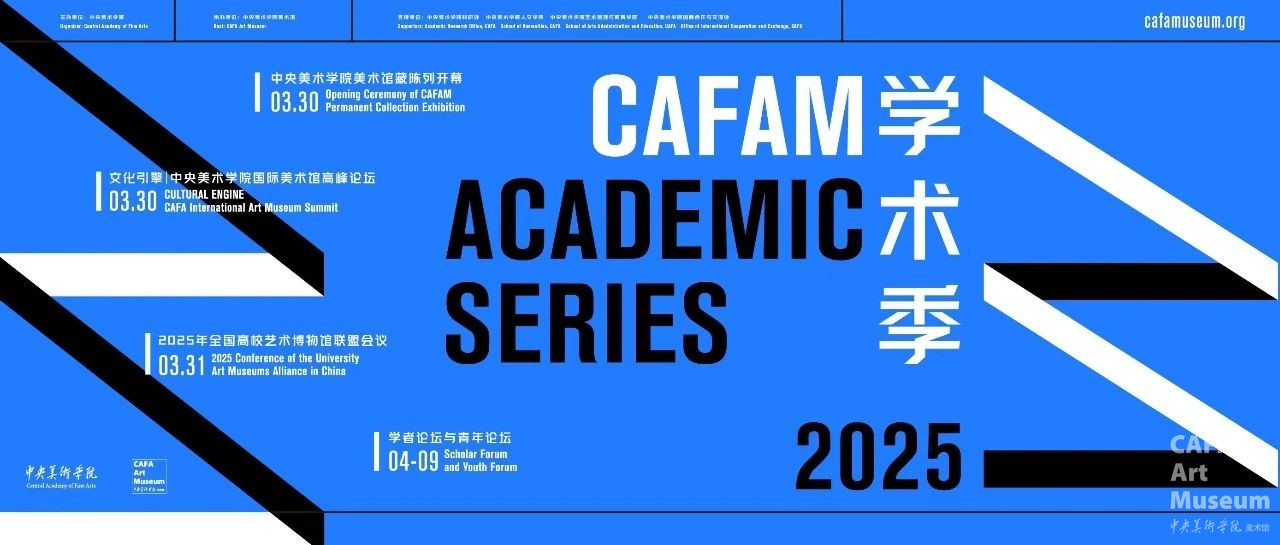

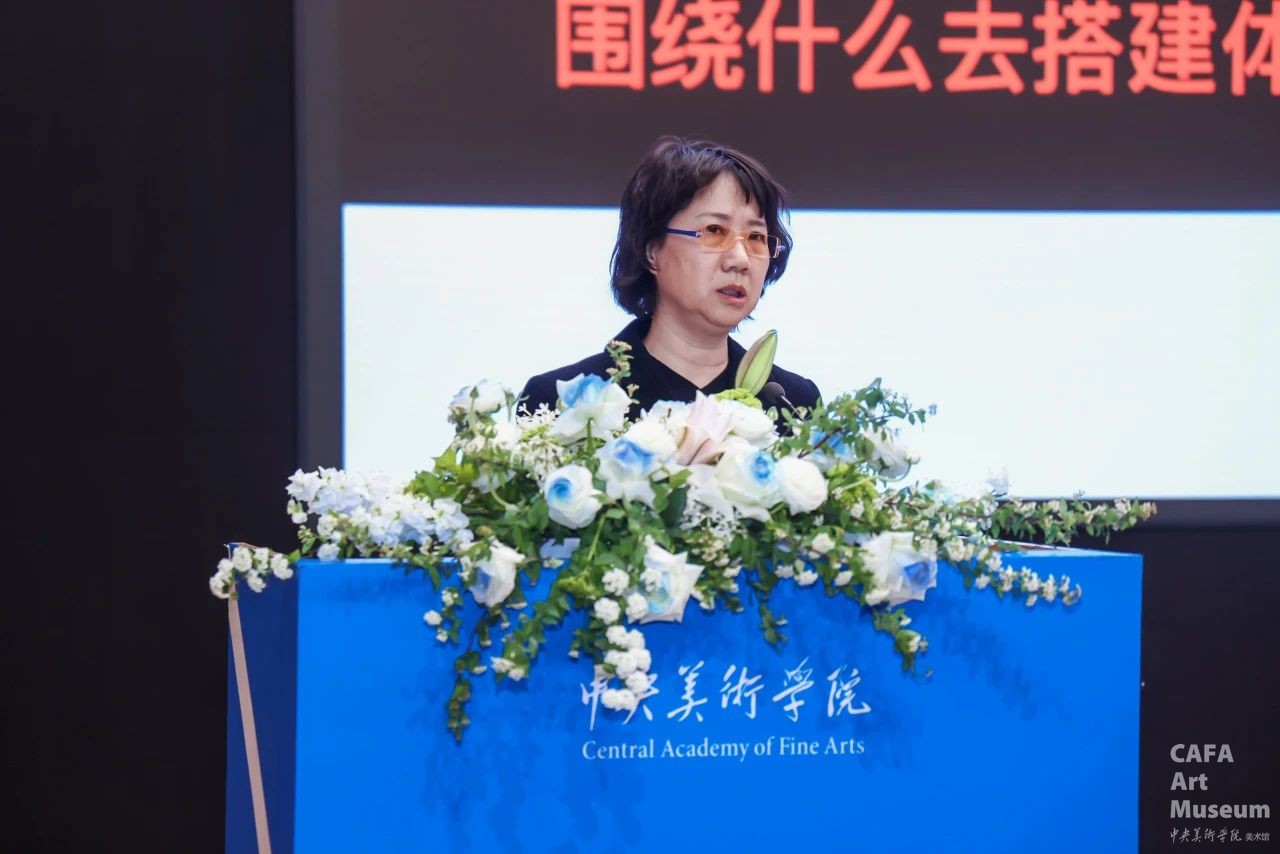
Tang Xin, Artistic Director of Taikang Art Museum
「
The Taikang Art Museum is committed to being a professional yet welcoming art institution,with a focus on art created in China following the country's entry into modern development.Their primary mission is to utilize art as a means to narrate the artistic story of contemporaryChina to the public, serving both artists and art enthusiasts alike. This vision showcases themuseum's profound understanding and appreciation of the value of art, as well as its emphasis onpublic art education, aiming to bridge the gap between art and the public. In her speech, TangXin, artistic director of the Taikang Art Museum, shares insights into the museum's mission andfuture vision.
」
1.
Building A
Knowledge Production Framework
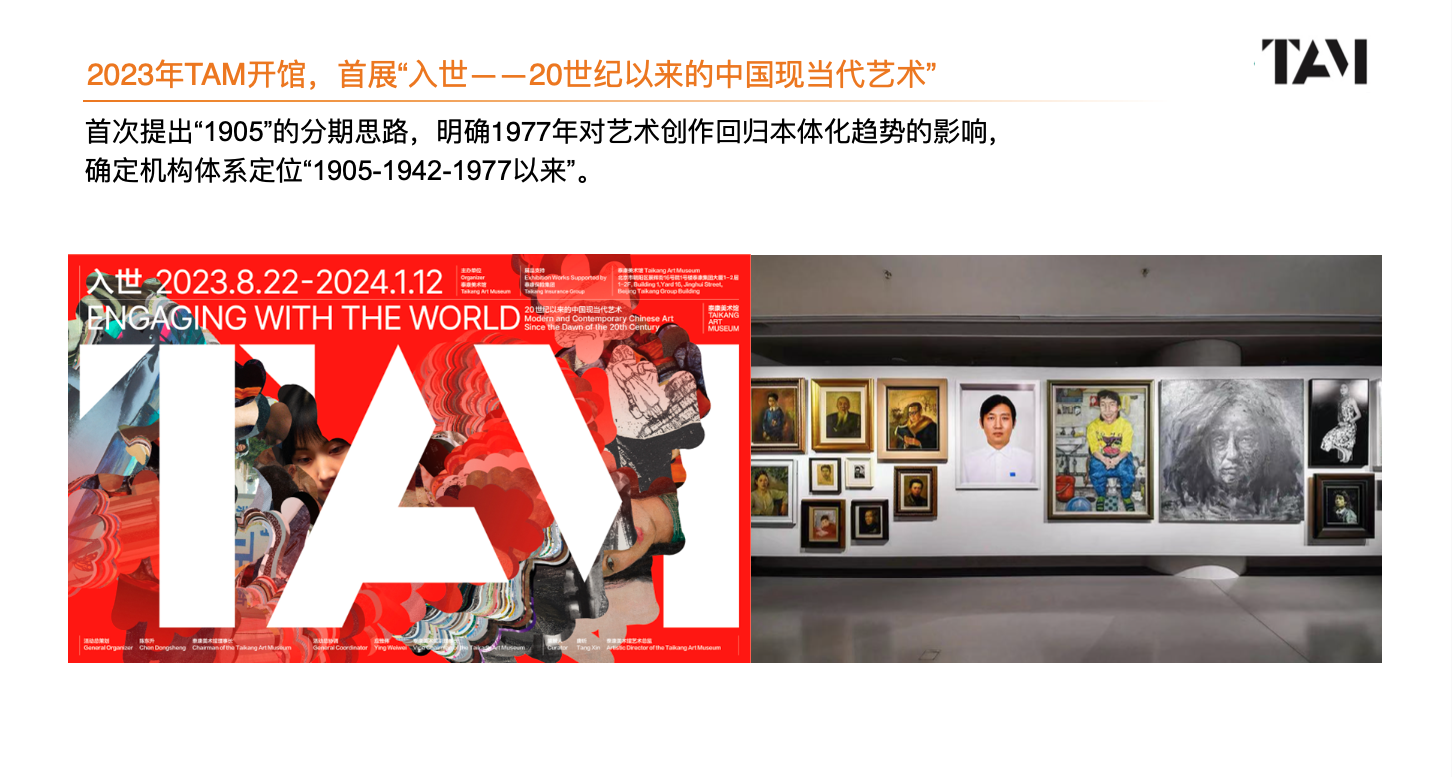
The Taikang Art Museum, formerly known as Taikang Space, boasts a 20-year history ofacademic art and collections. The museum systematically explores this tradition and iscommitted to developing its knowledge production system as an evolution of contemporaryChinese art. TangXin emphasizes that a museum's mission essentially revolves around aestheticvalues and value systems and that these values are interconnected with people. Therefore, theprofessionalism and friendliness of the Taikang Art Museum are reflected in both theprofessional construction of its value system and its friendly interaction with the public. Thecurrent framework is based on the timeline "1905-1942-since 1977", focusing on the history ofart in China since its entry into modern development. Within its framework, the museumorganizes its system into three major research questions and working methodologies.
1) Three Core Questions
Taikang Art Museum structures its work around three core questions: medium, ecology, andinstitutionality. These three key issues were gradually distilled and summarized over the courseof twenty years of practice and project development at Taikang Space.
In terms of medium, it has been a central focus since 2012. The museum has paid attention toboth traditional media, such as ink painting and printmaking, and new media, includingphotography, video, performance, and installation. Returning to the essence of art, it explores thelocalized development of diverse media within the Chinese localized context. Over the pasttwenty years, 52 projects have been conducted around the topic of the medium, withphotography treated as a special case for dedicated collection and research.
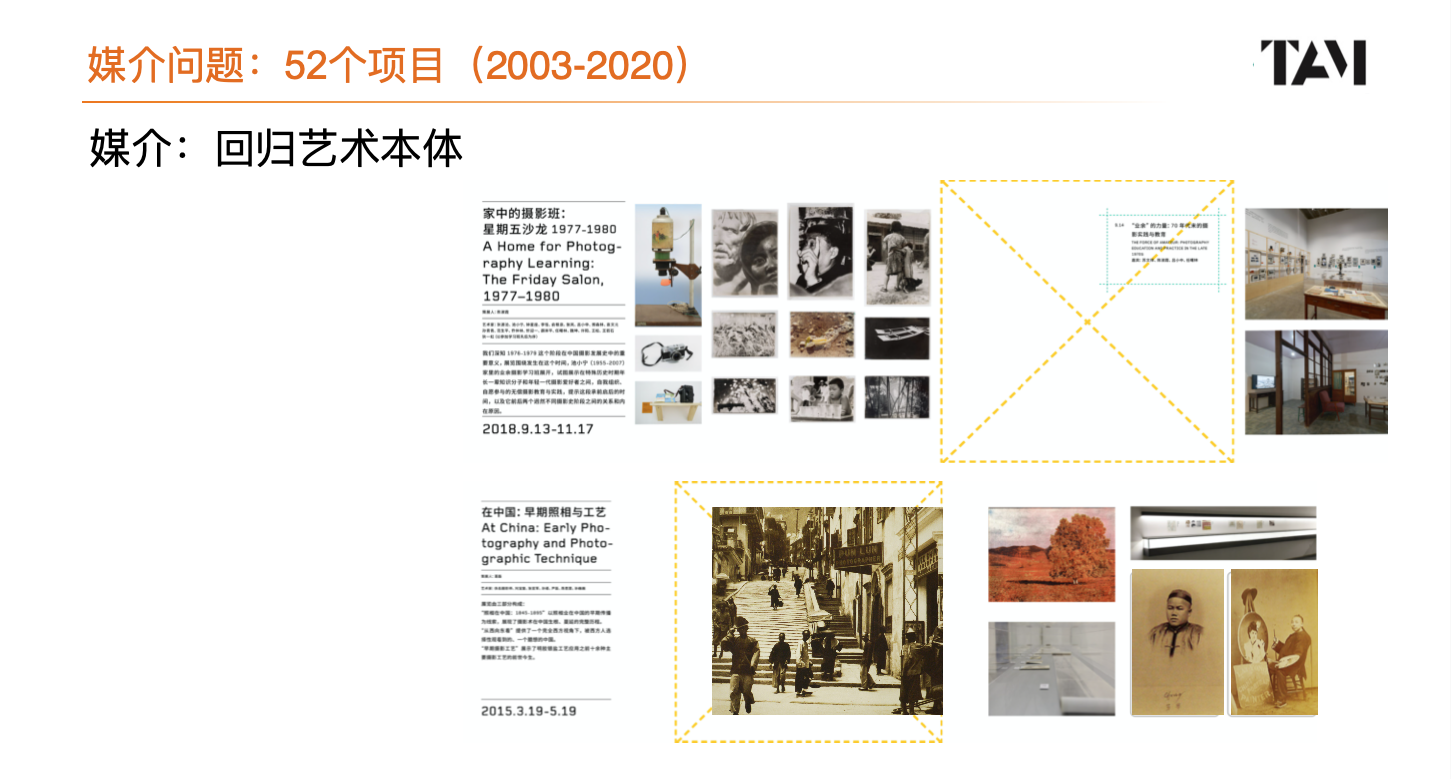
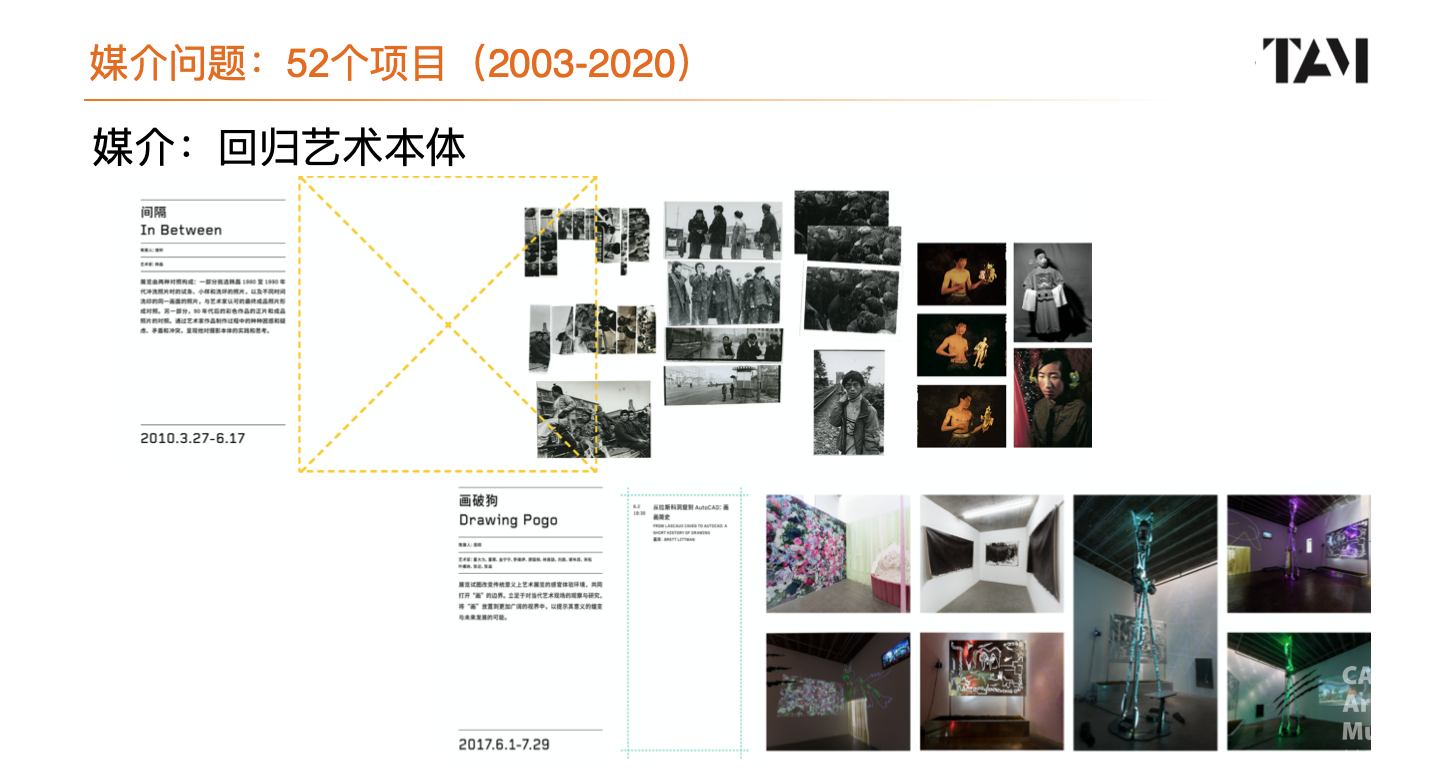
In terms of ecology, the museum examines how societal power and factors shape artisticcreations and artist communities within the evolution of China's art ecosystem. The ecologicalquestion was raised in 2013, and 74 projects have been carried out in response to this theme.
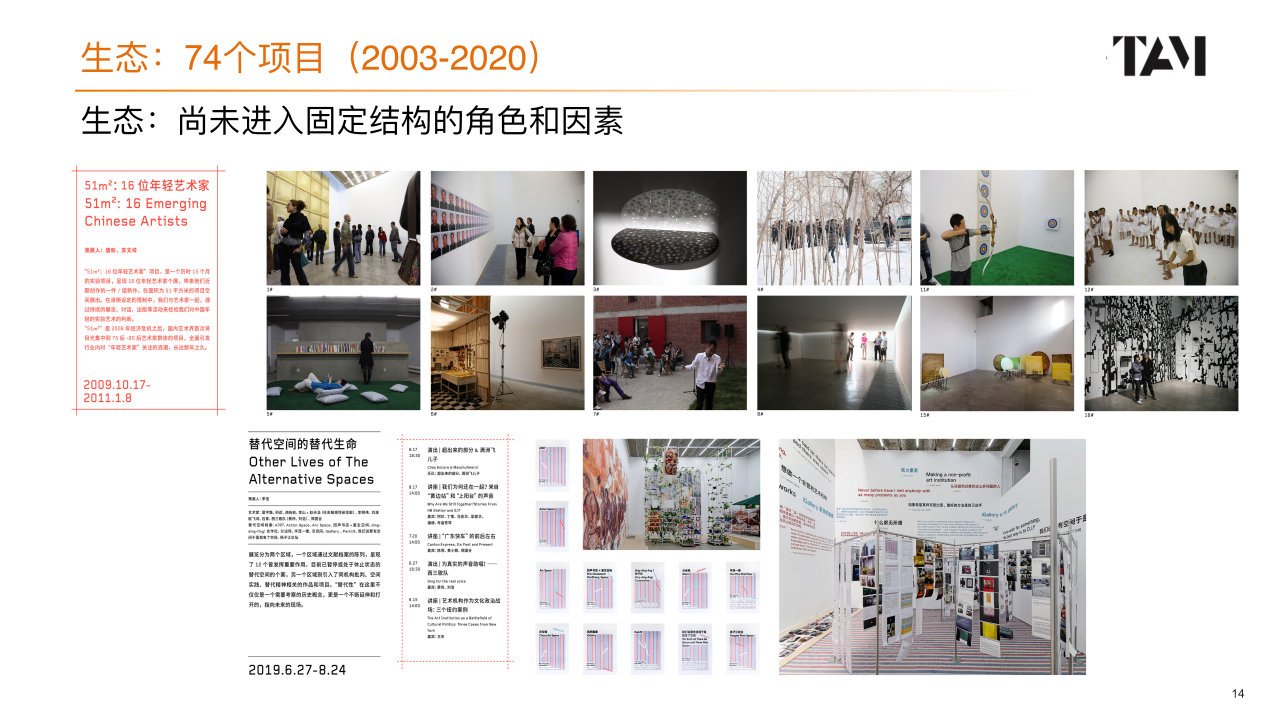
Lastly, regarding the issue of institutionality, the museum continuously focuses on how localisedlocalized traditionalism—such as local ideology formation, historical events, economicdevelopment, and advancements in science and education—shapes the norms of artisticdevelopment. Since this question was raised in 2015, it has become one of the museum's keyareas of research.
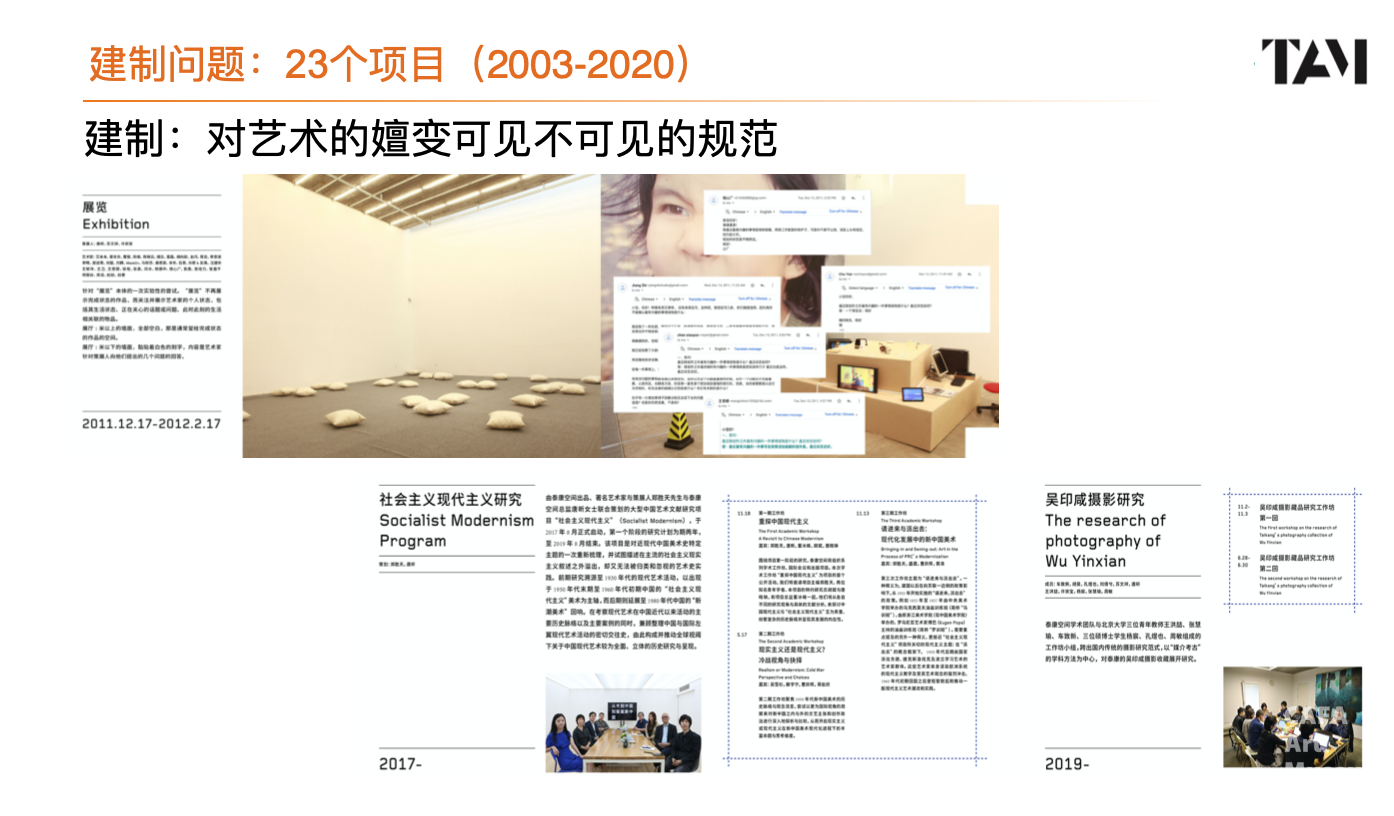
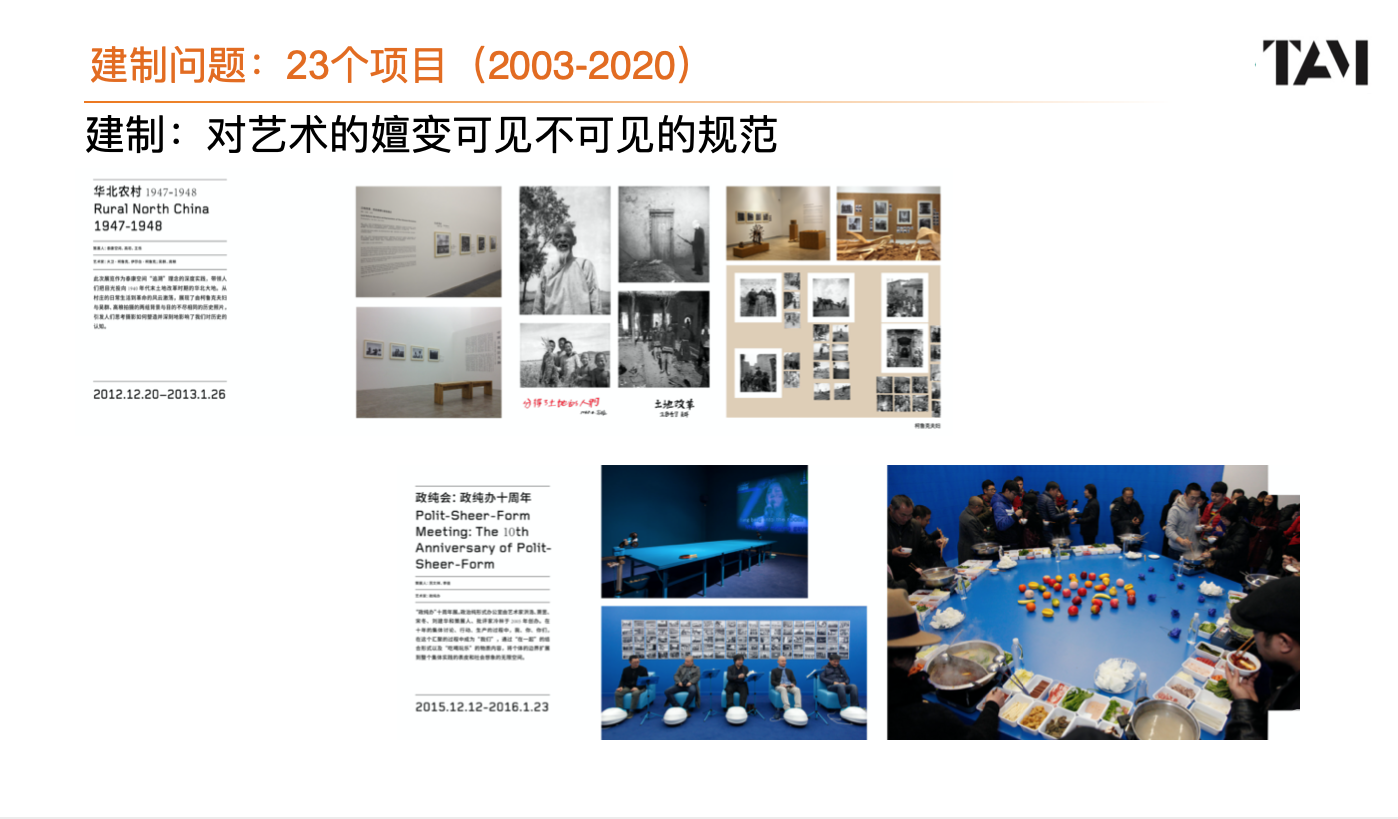
2) Working Method
Taikang Art Museum adopts a method of integrating exhibition, collection, and research. Since2005, it has pursued professionalism and systematic collection practices, utilizing its collectionas historical evidence. The museum now holds a rich and substantial collection. This approachhas created a close connection between research, collection, and exhibition, providing aprofound, solid foundation for the acquisition of its knowledge production system.
2.
Time frame and
historical periods
The Taikang Art Museum created a time frame spanning from 1905 to 1942 and then to 1977,focusing on this structure for further research. In 1905, the elimination of the imperialexamination system marked a turning point in artistic creation, shifting from traditionalism to itscurrent form of modernism. Artists transformed from being traditional literati to modernprofessionals equipped with specialized knowledge systems. The year 1942 is significant as itmarks the time when Mao Zedong delivered his Talks at the Yan'an Forum on Literature and Art.In 1977, the resumption of the college entrance examination shifted focus toward academicspecialization, which later influenced a trend among artists to pay greater attention to theirchosen mediums of expression. These three historical moments are crucial for understanding thedevelopment of modern and contemporary Chinese art.
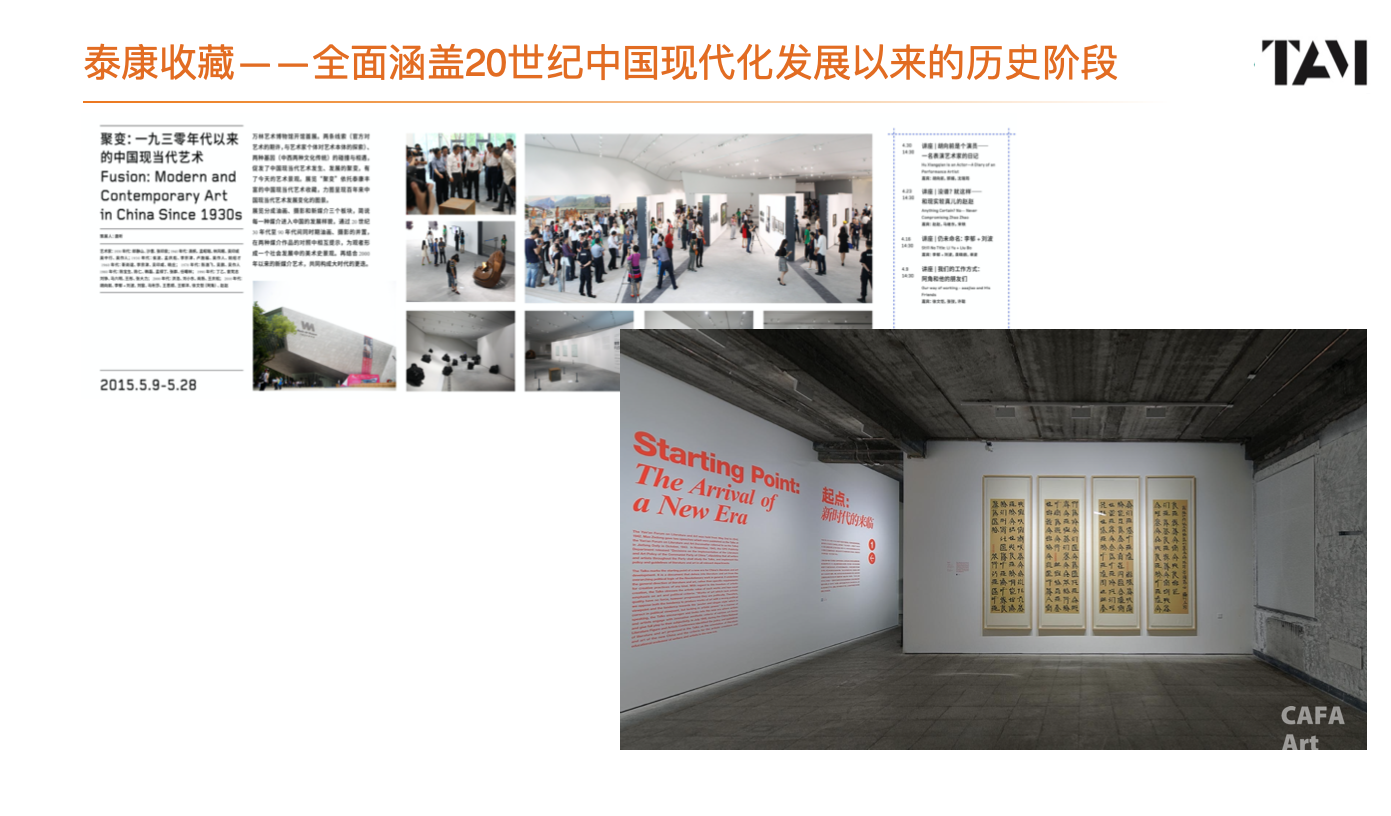
3.
Public engagement
and Friendliness
Taikang Art Museum not only focuses on professionalism but is also committed to becoming afriendly institution engaged with its audiences. TangXin emphasizes that the institution aims toresonate with the spirit of the times, utilising a shared frequency to connect with the audience'severyday experiences and help the public gain a deeper understanding of contemporary art.
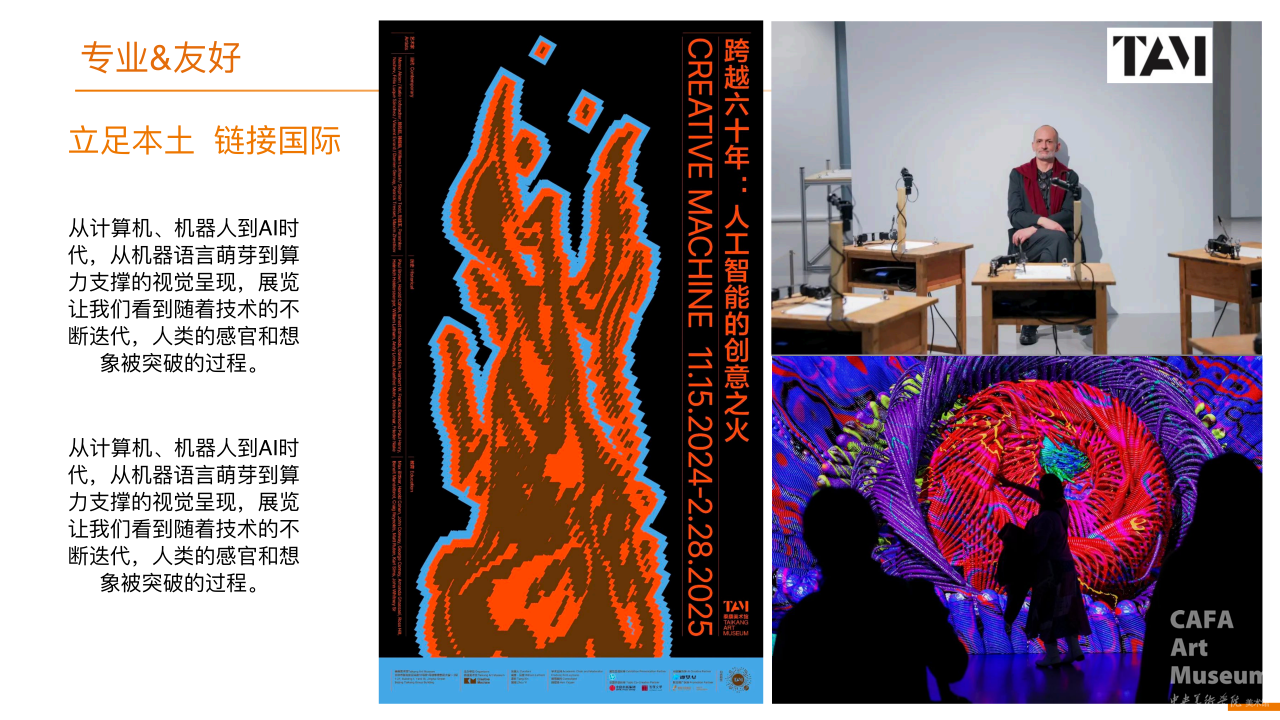
To this end, the museum held a series of targeted events. For instance, they connected 15 schoolsand over 170 Beijing middle school students through an AI art competition experience, breakingdown the barriers between Art Museums and academic education. Furthermore, the museumpresented a dynamically balanced combination of Party history education and artistic contexts.Nearly seven events were held across five cities, with over 3,000 Party members participatingboth online and offline. These activities reflect the museum's active exploration and innovationin public engagement. They aim to bring art closer to our everyday lives and to strengthen thepublic's sense of identification with and participation in art.
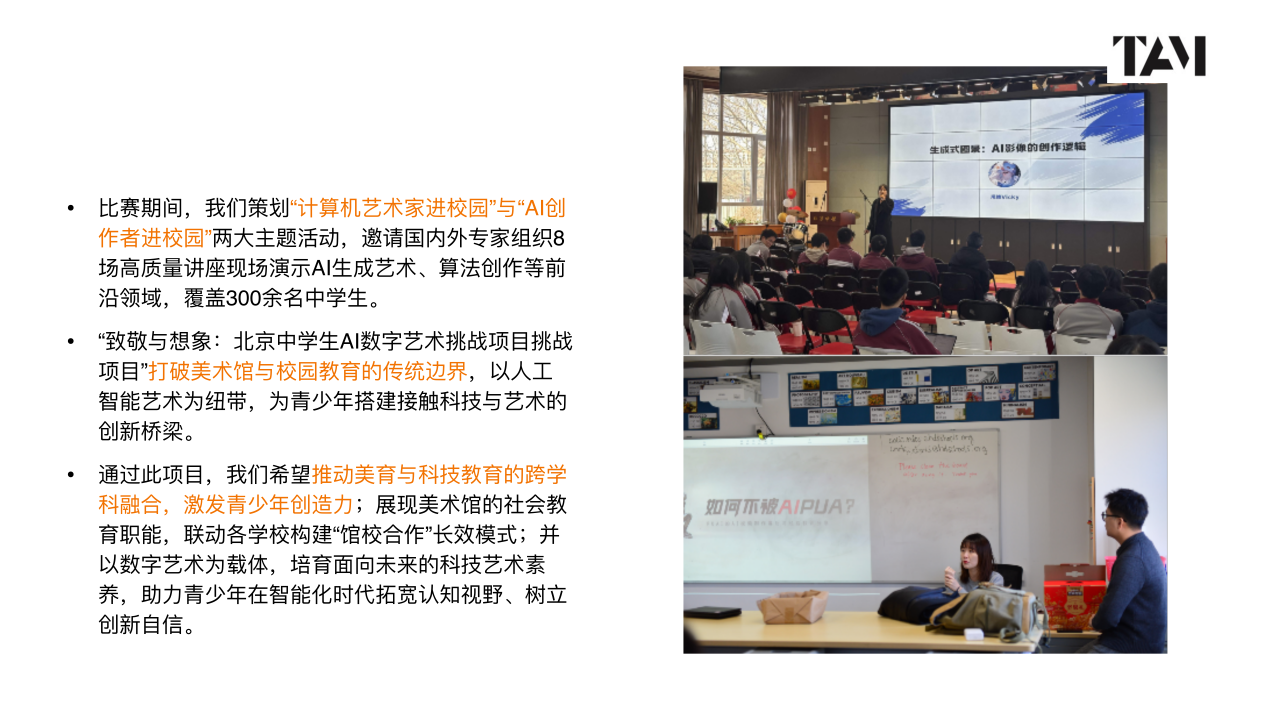
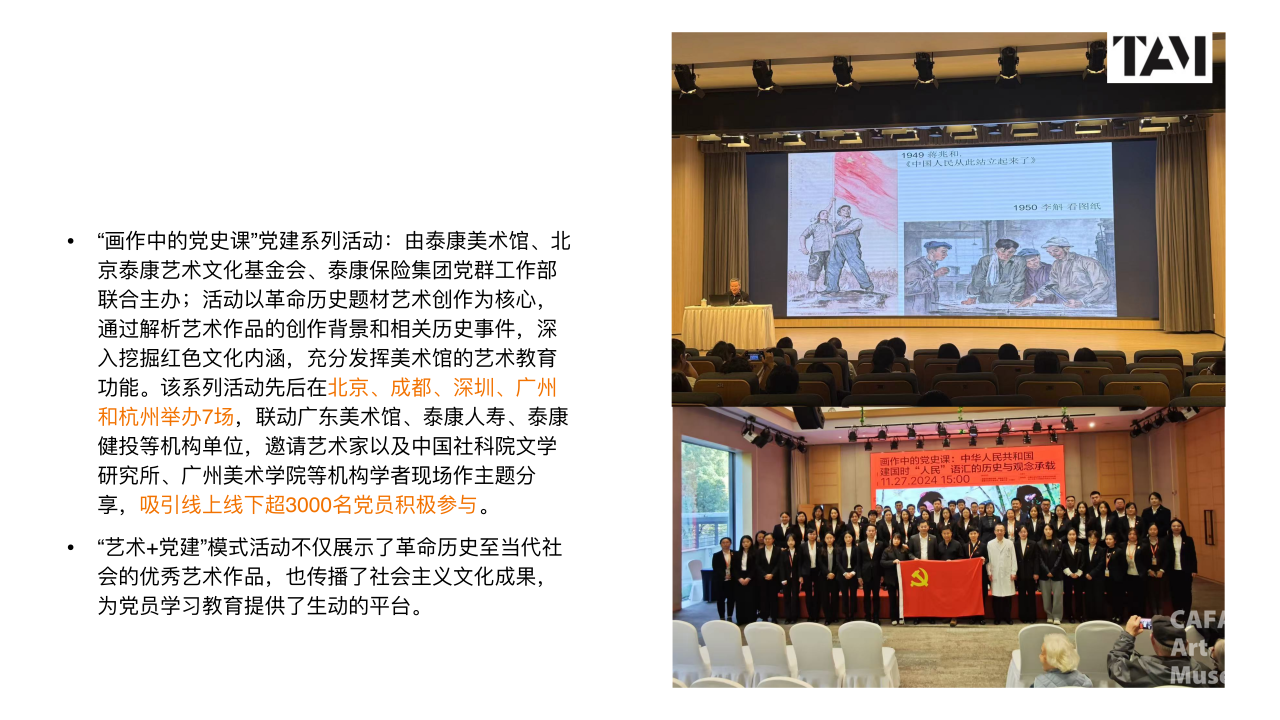
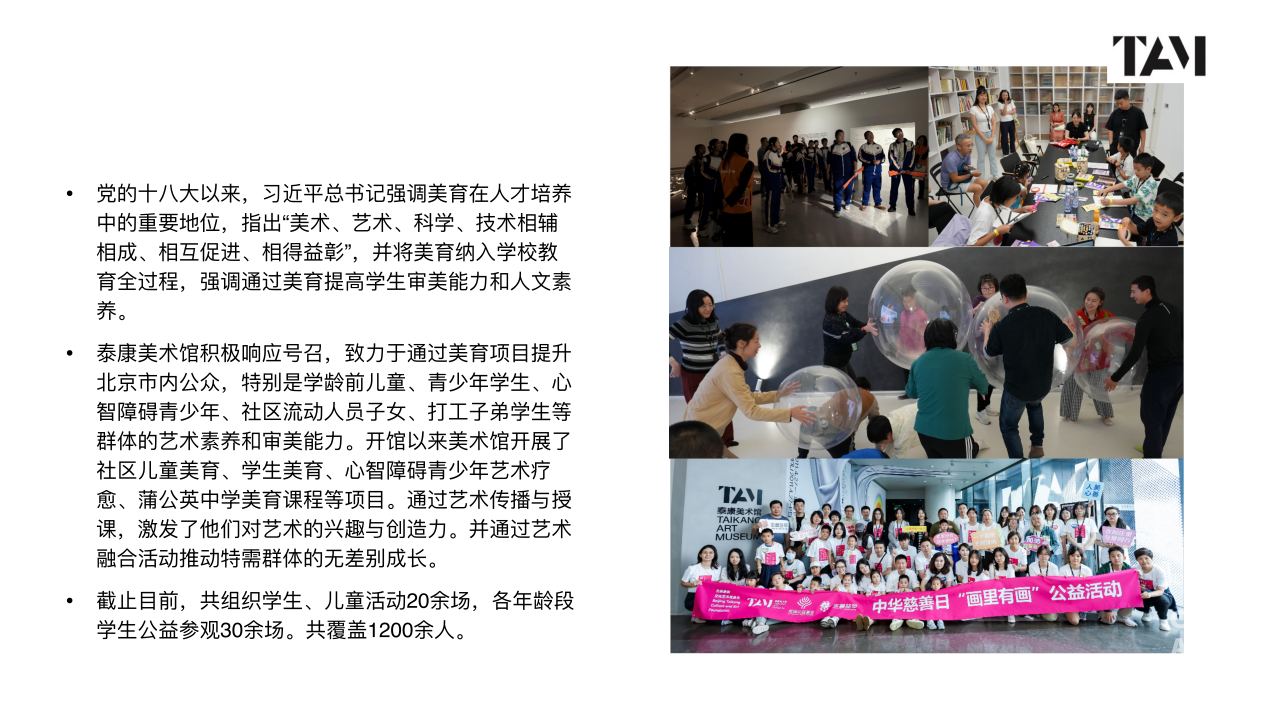
4.
Current Exhibition
and Future Visions
TangXin notes that the Taikang Art Museum is currently presenting an exhibition focused on artfrom the 1980s and 1990s. The goal is to assist the audience to approach and understand the artof that era through empathy and shared experience. This reflects the museum's emphasis onresonance with the public in its curatorial planning—seeking to awaken collective memory andemotional connection through artworks. For the future, Tang Xin hopes that the museum willbecome a platform that belongs to both creators and art audiences, continuing to seek a balancebetween professionalism and friendliness, advancing the development of modern andcontemporary Chinese art, and offering the public a richer and more diverse artistic experience.
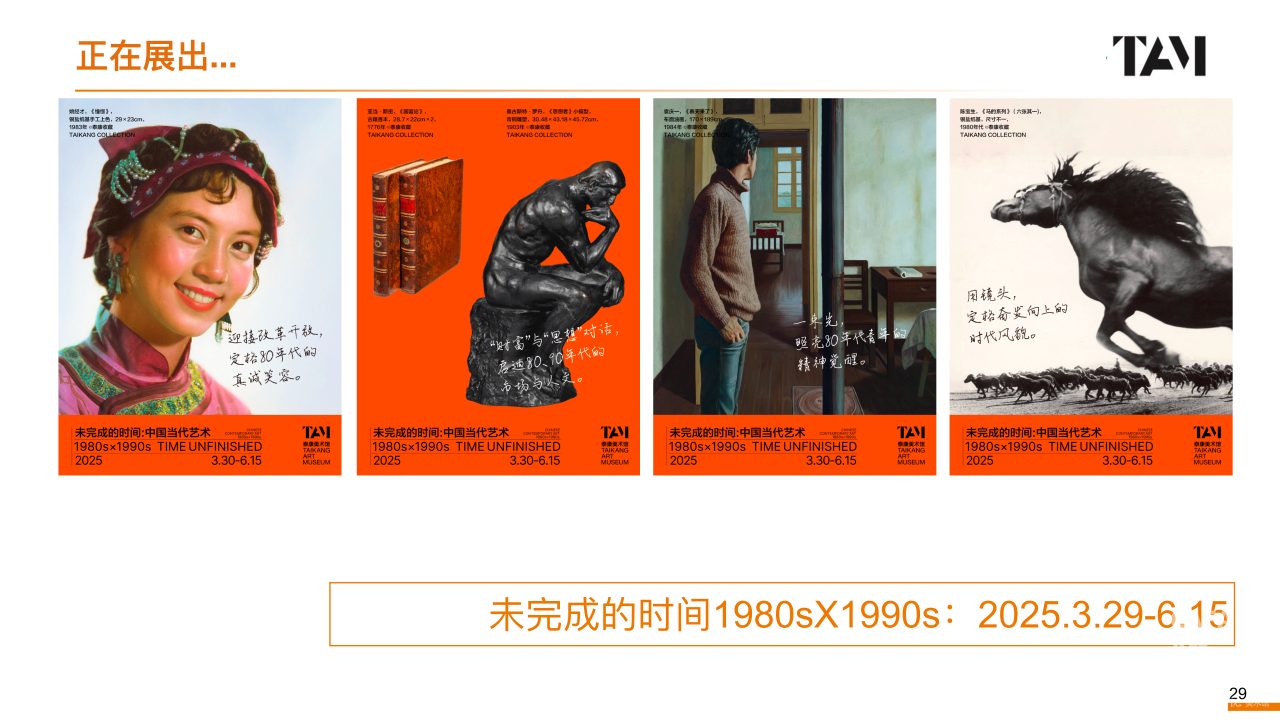
5.
Conclusion
D
irector TangXing's speech thoroughly and in-depth explores the mission of the TaiKang ArtMuseum, the knowledge production system, three main research questions and work methods,time frames and historical periods, audience engagement and friendliness, as well as currentexhibitions and future visions. Through this information, we can clearly see the efforts towardsprofessionalism and friendliness that TaiKang Art Museum strives for. Art museums not onlyhold remarkable experience in academic research and collections but have also made activecontributions to public engagement and art education. The Taikang Art Museum's practice offersvaluable references and insights for the development of modern and contemporary Chinese artwhile also establishing a solid bridge for communication between the public and the art.In the future, the Taikang Art Museum will continue to be committed to fostering a connectionbetween art and the public.
Introduction of Guest Speakers
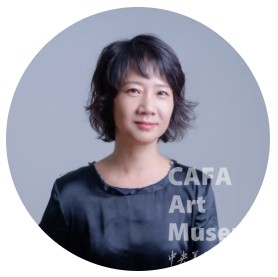
TangXin
Head of the Art Collection Department at Taikang Insurance Group, Artistic Director of TaikangArt Museum, and Curator. TangXin graduated from Tianjin University of Science andTechnology in 1990 and became an independent curator in 1997. In 2003, she joined TaikangInsurance Group and founded Taikang Space, which has since evolved into today's Taikang ArtMuseum—now one of the most dynamic nonprofit art institutions in China. As the head ofTaikang's Art Collection Department, Tang has led over two decades of research andaccumulation, establishing a leading, large-scale corporate collection that holds significant valuefor art history. Under his leadership, the Taikang Collection has become one of the most visibleand comprehensive collections in China, systematically documenting the history of artisticdevelopment since the country's modernization in the 20th century.
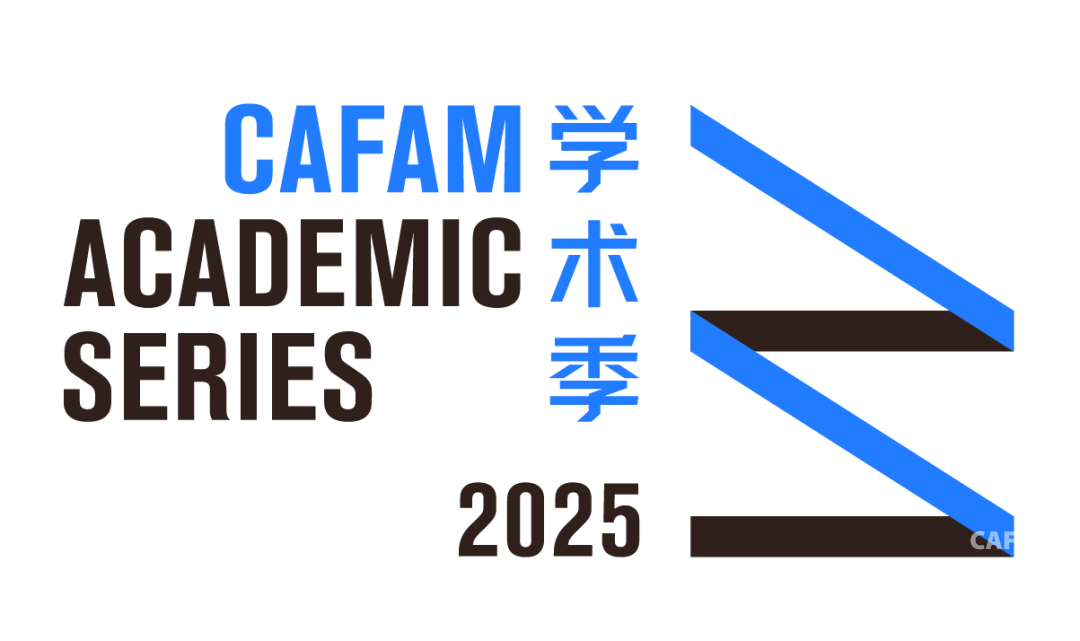
主编 / 何一沙
责编 / 杜隐珠
现场图 / 贺伊飞
文字整理 / 许禧
Chief Editor / He Yisha
Executive Editor / Du Yinzhu
On-site Photos / He Yifei
Text Compilation / Xu Xi
